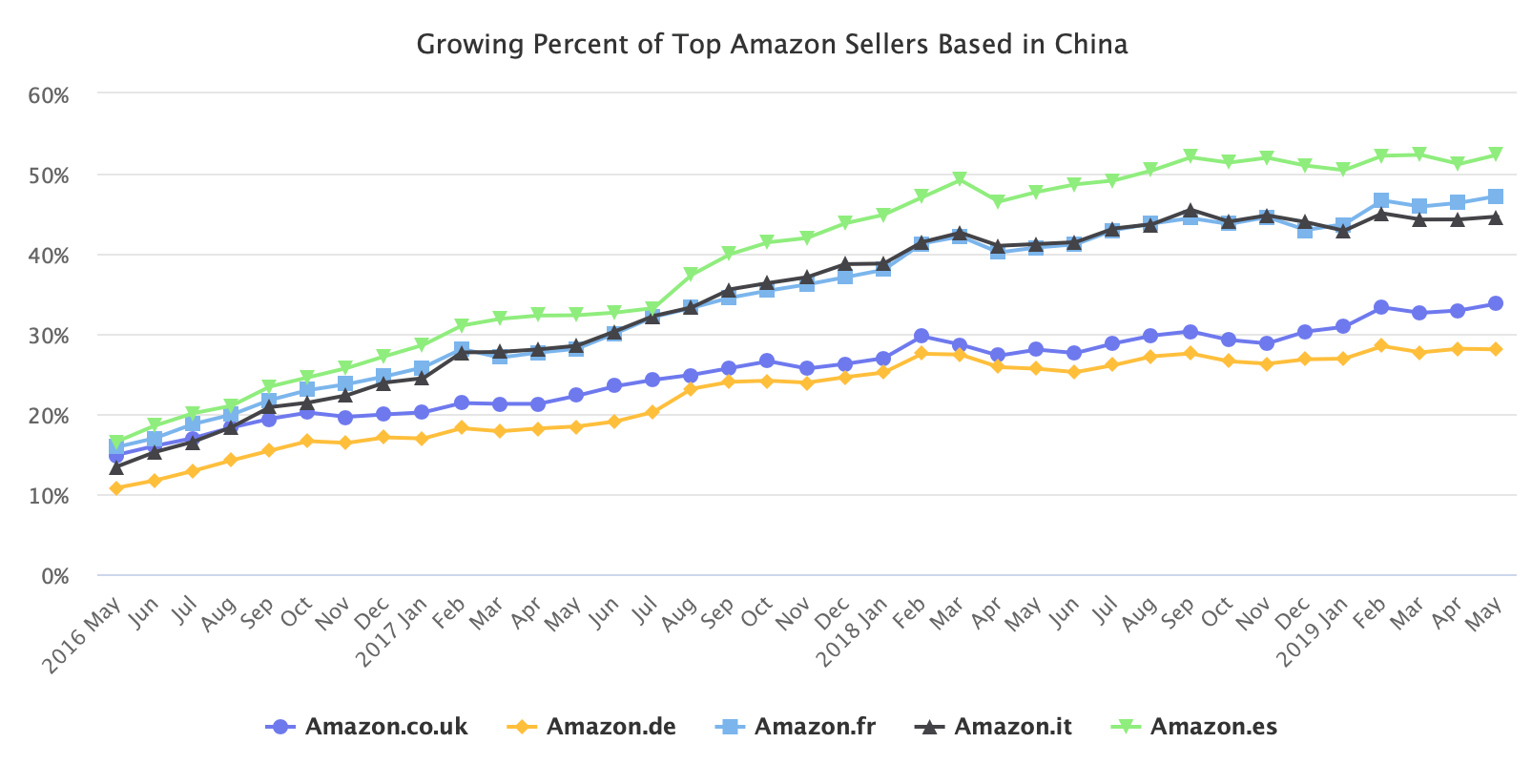40% of the top sellers on Amazon are based in China, up from 26% in 2017, according to Marketplace Pulse research and in majority they sell made-in-China products.
China, after all, is the largest producer of everything, and that’s what the increasing number of sellers are selling.
There is a huge variety of innovative products in any category that attracts Amazon sellers and of course final buyers.
Amazon failed in China to develop, however China is winning on Amazon.While Amazon struggled to grow, not only has China e-commerce exploded in growth, so has the number of successful businesses from China selling through Amazon.

In a year, sellers’ based in China market share increased from 28% to 34% on Amazon.co.uk in the UK, from 26% to 28% on Amazon.de in Germany, from 41% to 47% on Amazon.fr in France, from 41% to 45% on Amazon.it in Italy, and from 48% to 52% on Amazon.es in Spain. The combined average increased from 37% to 40%.
These data shows that the important key to success in FBA is the bridge required between the largest global market located in China and storing the right inventory at Amazon’s warehouse.
So in day-to-day reality things for Amazon sellers worked like this:
Once you had found products you’d like to import, the next challenge you faced was getting them from the supplier, through the import process, and delivered to you. Importing wasn’t quite as simple as placing an order and having it delivered.Also certificates and paperwork was needed.
Yiwusafetrade helps you now to resolve and simplify this procedure as possible it can be.
In this trading enviroment, yiwusafetrade.com developed professional services to help FBA sellers increase their revenue and profit margin on the road to success.All products placed in our store are carefully selected after using scouting tools to provide all best sellers and new trending products at the lowest prices you can get.
We provide total support in all prossess .
From sourcing the most reliable and interesting products in measure of demand , purchasing on behalf of our customer in factory direct prices, inspection of quality , warehousing and shipping at your destination with all certificates needed according to Amazon’s guidelines ,whether it is an Amazon warehouse or a different address .
Ship your products to Amazon.
The word “margin” is often on an Amazon seller’s mind, so cost is an important consideration at play. When it comes to shipping, cost is a juggling act between the weight and the size of the shipment.
Our team always offers advices and solutions for every single shipment,trying to minimize transport time and freight cost.
We create your shipping plans considering always the most appropriate way,by sea or by air.We care about your expenses so we try to get the best shipping prices and deliver to the shipping company your items as soon as possible.
After that,we provide you tracking for your shipments by air to Amazon fulfillment centers.
As a seller, you need to have some knowledge of the import process and the various steps involved in getting your products delivered to Amazon.
For example, here are just a few things you need to know:
- A US Customs bond is required for shipments. As a regular importer, your most cost-effective method tends to be an annual or continuous bond. Your other option is one-time bonds per shipment, but these soon add up to much more than a continuous bond, especially when you ship often.
- Commercial invoices and packing lists will be required by Customs. The invoice must show what you have paid for the goods.
- Any wood pallets or crates must show a stamp to prove they have been correctly fumigated.
- Some products require prior notice of their shipment to be filed within a certain amount of time. For example, FDA requires prior notice of food shipments.
- Boxes must be clearly labeled, otherwise they can get held up for checking. Master cartons must include a label with carton count, country of origin, gross and net weights, and tracking information.
- Tariffs and duties may be charged. In fact, they almost always are. The thing to be on the lookout for is any products where tariffs will be high. Some are subject to more than 100% duty, especially where they are part of anti-dumping laws. This is something to find out in advance – you don’t want a surprise bill!
- Fees may be charged if your shipment requires examination by Customs or other agencies.
- You can be hit with storage charges if your shipment must be stored for inspection.
You need to know where the products are going – usually Amazon will want them distributed across various warehouses, although they do have the option of their Inventory Placement Program too. This means you can ship your goods to one warehouse instead of several, however, they do charge a fee per unit for the service. You’ll need to cost out the whole thing, determining which way is more cost-effective.
If you’re importing a small number of products to test the market, usually it works out better to use a courier such as DHL, UPS or FEDEX. A general “rule” is that the courier can handle shipments of less than 150 kilograms, where commercial value is less than $2500. Do your research to confirm this though, and to ensure you’re getting the best value for money.
For larger shipments, you’re going to make a choice between air freight or sea freight. It’s always a balancing act between the length of time the service takes, and how much it will cost you. Don’t assume sea freight will always be the cheaper option; sometimes the difference is marginal, particularly with smaller loads.
If you need guidance on that,we have the experience and many successful partners that are FBA sellers willing to help at any time.
